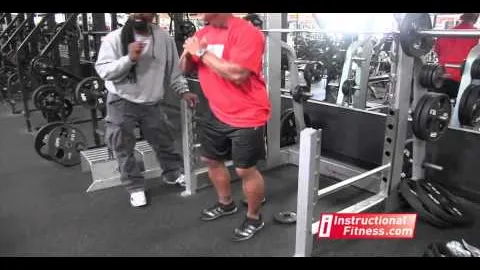
The rear squat exercise is a highly effective compound movement that targets multiple muscle groups, including the quadriceps, hamstrings, glutes, and lower back. It is a staple exercise in strength training and powerlifting routines due to its ability to build overall lower body strength and power. In this article, we will delve deeper into the benefits of the rear squat exercise, its proper execution, variations, and some important tips to keep in mind.
The rear squat primarily targets the lower body muscles, making it an excellent exercise for building overall lower body strength. With consistent practice and progressively increasing weights, the rear squat helps to develop stronger quads, hamstrings, and glutes. This is particularly beneficial for athletes involved in sports that require explosive lower body power, such as sprinting, jumping, or weightlifting.
The rear squat is a compound exercise that engages multiple muscle groups simultaneously. This not only helps to develop strength but also stimulates muscle growth. As a result, incorporating rear squats into your training routine can contribute to an increase in lean muscle mass and overall body composition.
Functional fitness refers to the ability to perform everyday activities efficiently and with reduced risk of injury. The rear squat exercise mimics movements we often encounter in daily life, such as sitting down and standing up. By training these movements with resistance, we can strengthen the muscles involved and improve overall functional fitness.
The rear squat exercise is commonly used by athletes across various sports disciplines to improve their performance. By developing strength and power in the lower body, athletes can enhance their speed, agility, and explosiveness. Additionally, the rear squat can help to improve jumping abilities and overall athletic power, making it a valuable exercise for athletes in sports like basketball and soccer.
To perform the rear squat exercise correctly, follow these steps:
As the name suggests, the front squat involves holding the barbell in front of your body, resting on your shoulders. This variation places more emphasis on the quadriceps and core muscles, challenging your balance and mobility. It is an excellent choice for individuals who want to target their quads more intensely.
Hack squats are performed using a hack squat machine or a barbell placed behind your legs. This variation primarily targets the quadriceps and can be a great alternative for individuals with limited mobility or back issues.
Safety bar squats utilize a specialized barbell with handles that allows for a more upright posture during the movement. This variation is useful for individuals with mobility restrictions or lower back discomfort, as it reduces the stress placed on the spine while still targeting the lower body muscles effectively.
To maximize the benefits of the rear squat exercise and avoid potential injuries, keep the following tips in mind:
The rear squat exercise is an essential addition to any strength training program. It offers numerous benefits, including increased lower body strength, muscle mass, functional fitness, and improved athletic performance. By following proper execution techniques, exploring different variations, and incorporating these exercises into a well-rounded fitness routine, you can take full advantage of the rear squat's potential. Remember to prioritize safety and progress gradually to achieve long-term results.
If you're looking for a gym, fitness club or yoga studio, you've come to the right place.
You can find information about gyms in your area. Browse catalog of gyms and find gyms with classes which are you looking for.
On gym page you can find simple information like address, phone or website. You can find list of available classes. You can check availability of personal training or small group classes. On place page you can also see information about open hours.
You can find gyms near you with amenities, courts, studios and equipments.
Use our map to find gym at your city or district.
In Gym Navigator you can find list of exercises with movies for many body parts.
You can browse exercises catalog and find exercises the best of you.
You can also find exercises grouped into workout plans, which you can use to improve you body. Each routine show you exercises one by one and give you possibility to count you progress and count down rest time.